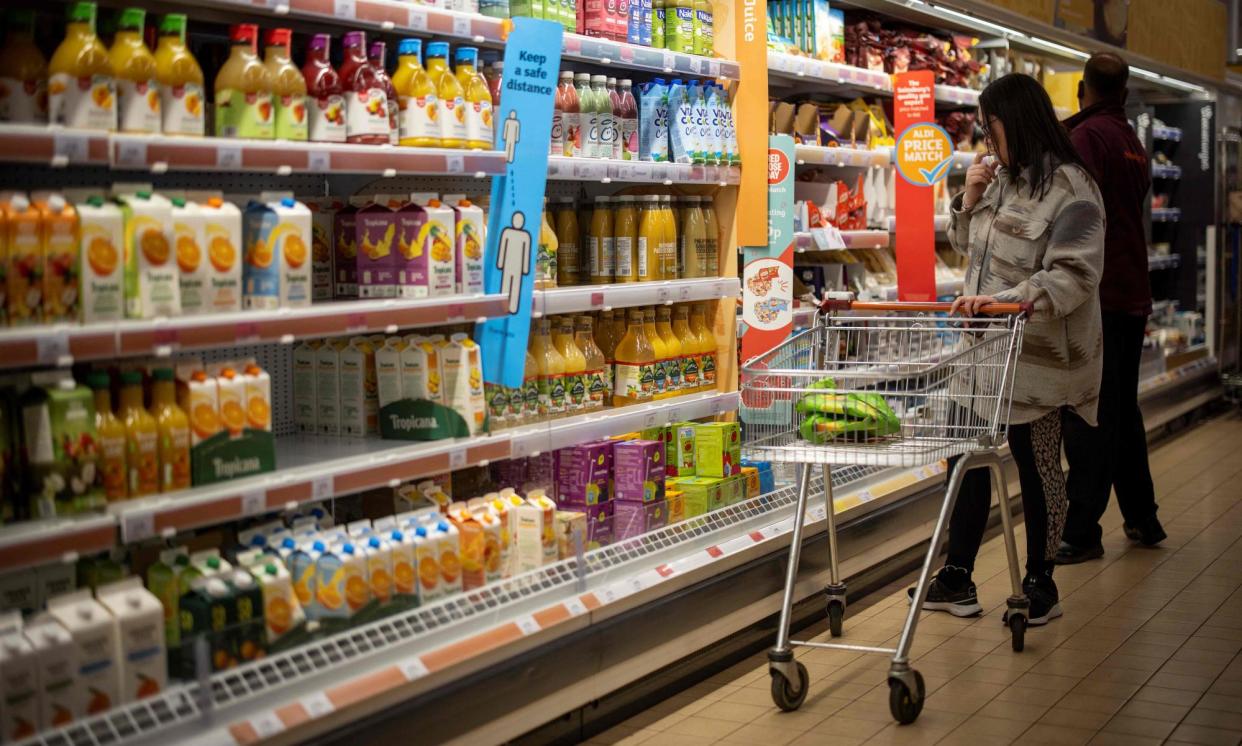Applejuicification: why the fruit is found in so many mixed juices

Last week, an X user shocked the internet in a viral thread by pointing out that most mixed juices and smoothies are mainly made from apples.
The post looked at 13 juices in a supermarket aisle, noting that the majority were made with 50% apple juice or more, despite not having any apple in the name. It was described as “applejuiceification and the illusion of choice”.
Applejuiceification and the illusion of choice: a short thread pic.twitter.com/sC5bQSJkaQ
— Stakeholder Consultant (@echetus) March 25, 2024
What is applejuicification?
The examples used in the X thread include a Naked passion fruit, mango, and guava smoothie with 62% apple juice. Also, an Innocent pink dragon fruit and lychee drink made from 70% apple juice.
The British Soft Drinks Association (BSDA) said adding apple juice like this was common practice. It said: “It’s worth highlighting that juice and smoothies provide a range of vitamin and nutritional benefits in a convenient format for many consumers.”
Related: How food companies ‘sweetened the world’ – and increased the risk of disease
Why is it done?
The BSDA said it was primarily used to balance the flavour. It said: “Apples have a delicate taste and natural sweetness that can help balance the profile of smaller fruits, which have a stronger flavour and can be overpowering in large quantities.”
Nevertheless, others had a more sceptical take on it. Dr Chris van Tulleken, NHS doctoral and associate professor at UCL, said apples were cheaper and also packed full of sugar.
“There are only two ways to make money from food and that is sell more of it or use cheaper ingredients … Apple is a double win as … they are the embodiment of healthy food. When you squash an apple there are several advantages to it from a commodity perspective.
“Apple juice is high in sugar but it also contains malic acid … If you get a glass of water and add table sugar it will become less palatable and not as nice but if you add a drop of lemon juice it becomes yummy … The sourness makes it more palatable and allows you to add more sugar than you can handle. That is one thing that drives long-term addiction. The advantage of apple juice is its sugar but packaged up with a very palatable acid. We like a sweet and sour taste.”
Van Tulleken says that apples are also an ideal crop because they grow on trees but do not have a hard kernel like a mango or a shell like a lychee so it is easy to get the juice out. “They are an incredibly cheap commodity with easy processing, so if I were a juice manufacturer that is the place to start. I would use apple juice as a base and if I wanted to make a lychee flavour I would add a few lychees on … or put a picture of lychee on a bottle. We can influence the way things taste with labels on bottles.”
Is it good for me?
The thread has raised the age-old debate about how healthy mixed juices and smoothies are. Barry Popkin, a US-based nutrition professor who campaigns against ultra-processed foods, said: “Fruit juices of all types are concentrated sugar water with flavourings in reality. Their sugar content matches other sugar-sweetened beverages. So while they have a health halo because of being linked with fruit, they are … not healthy.”
Popkin said it was likely that it was added because it did not detract from the other ingredients.
Drinking large amounts of fruit juice may raise your risk of cancer, according to a big study in 2019, which has found a link between the regular consumption of all kinds of sugary drinks and the likelihood of developing the disease.
The NHS recommends the combined total of drinks from fruit juice, vegetable juice and smoothies should not be more than 150ml a day – the equivalent of a small glass.
One of the juices examined – Innocent’s guava and lime – contains 9g of sugar in 100ml. Its pink dragon fruit and lychee has a similar sugar amount.
A spokesperson for Innocent said: “We never add sugar. Never have, never will. Our juices and smoothies only contain the same amount of natural sugar that is found in fruit and vegetables. At a time when we know most people aren’t getting enough fruit and veg in their diets our juices and smoothies are a tasty way to get more.”
Wouldn’t you notice all that apple juice?
Van Tulken said how a drink tasted could be hard to determine. “If you feed people vanilla yoghurt but colour it blue people will taste blueberries,” he said. “If you give people the same wine but colour one glass red then the red glass will taste of chocolate, berries etc and the white wine will taste of citrus and floral notes.
“Colour affects our taste. Dye scrambled eggs blue and you can’t eat them.”


